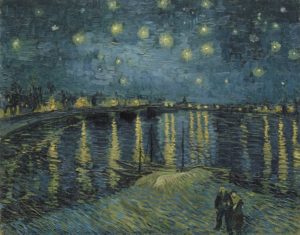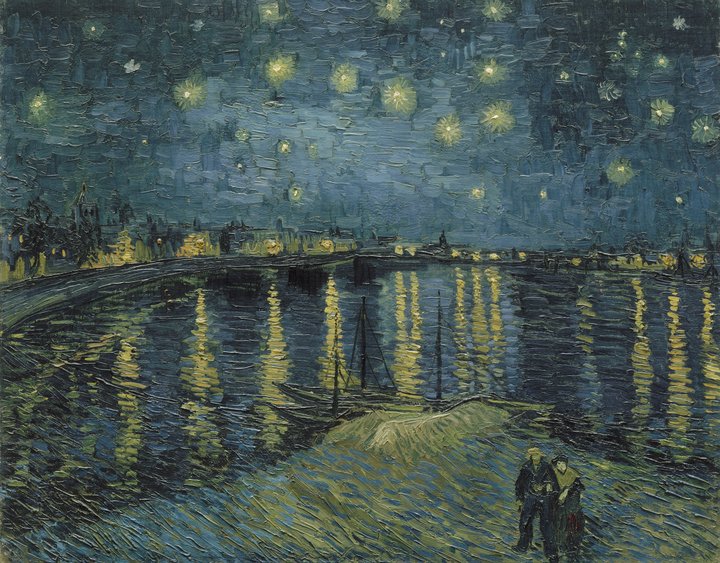16 May 2019
Van Gogh and Britain
Tate Britain (27 March – 11 August 2019).
By William Morton

This Exhibition focuses on the time between 1873 and 1876 Vincent van Gogh (1853-1890) spent in Britain and the influence it had on him and his own influence on British artists. In doing so, it brings out a number of interesting things about him I had not previously appreciated. For example:
(1) While his letters from England contain fine little pen and ink drawings, he did not take up painting until later and worked here for an art dealer and briefly in a school.
(2) He painted only in the ten years leading up to his death with the final two years of his life, when he was suffering from mental illness, being particularly productive.
(3) He greatly enjoyed the works of Dickens and ‘Uncle Tom’s Cabin’.
(4) He did not commit suicide in Arles but in Auvers-sur-Oise near Paris to which he had moved in order to be close to his brother Theo, who supported him financially and emotionally throughout his life.
The Exhibition covers well the ‘English’ sources which provided Van Gogh with ideas. It includes two pictures he particularly admired, Hobbema’s The Avenue at Middelharnis and Millais’ Chill October. The former he would have seen at the National Gallery, which acquired it a few years earlier. Its tree-lined road leading to a village with a figure in the distance is echoed in a number of his paintings. Then there was The Graphic, a paper founded in 1869 and illustrated with prints by well-known artists, many of them of social subjects such as slum life. Its effect on Van Gogh is clear in the sympathetic drawings of the poor such as that of an old man, Worn Out, he produced when he returned to Holland and lived in deprived areas.
Van Gogh also bought prints and amassed quite a collection including Japanese ones. His Prisoners Exercising, although clearly referencing his own feelings while confined to a mental asylum, follows closely a print by Gustave Doré of Newgate Prison.
Then there are the oil paintings produced, as mentioned, towards the end of his life. The Exhibition includes some wonderful examples such as The Sunflowers (actually not the most interesting) and Starry Night over the Rhone. In The Stone Bench in the Asylum at Saint Rémy, the empty bench conveys in a remarkable way a sense of isolation and loneliness.
The British ‘followers’ whose work is shown are highly talented – Frank Brangwyn, Harold Gilman of the Camden Town Group and Jacob Epstein (a painter as well as a sculptor), for example. Many use Van Gogh’s bright colours and brush strokes. Others build on his subjects. William Nicholson is represented by his Miss Jekyll’s Gardening Boots, which pays homage to his picture of a pair of battered shoes. Francis Bacon’s version of Van Gogh’s The Artist on the Way to Tarascon (a casualty of Allied bombing) does not have the spirit of the original in which the artist is accompanied by his shadow. Generally, the work of the followers does not have the same punch as that of the master and the comparison does not do them any favours.
An exhibition well worth seeing and gives an interesting insight into Van Gogh’s development as an artist.


